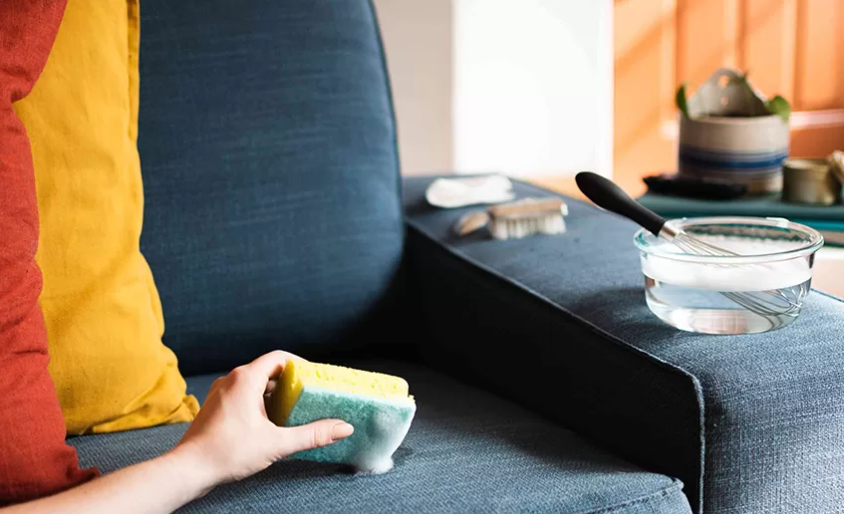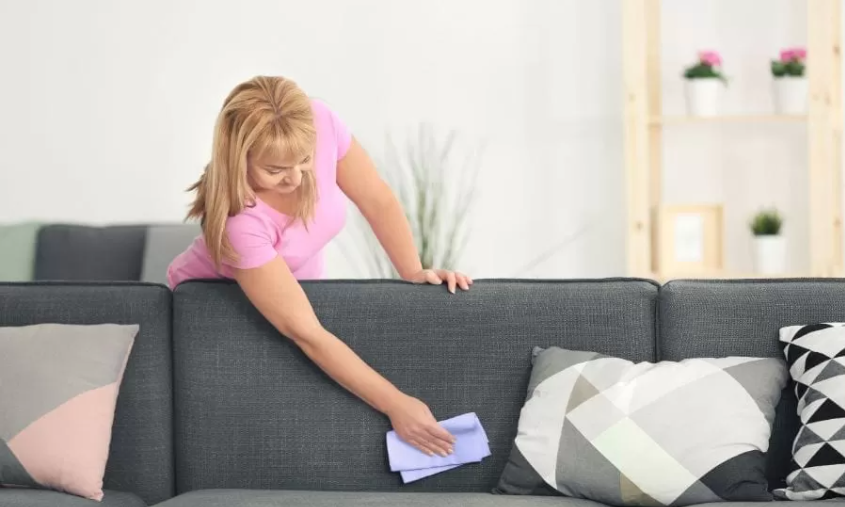How to clean upholstery without a machine, first vacuum thoroughly and then spot clean using a mixture of water and mild detergent. Blotting with a microfiber cloth helps lift stains without saturating the fabric.
Keeping your furniture in pristine condition doesn’t always require professional services or heavy machinery. Upholstery, a fundamental staple in any cozy home, often captures dust, stains, and odors, necessitating regular maintenance. A manual cleaning can protect and refresh your furniture without the expense or hassle of machine cleaning.
Armed with a few household items like a vacuum cleaner, baking soda, a bucket, and some clothes, you can effectively tackle dirt and grime. DIY upholstery care maintains both the appearance and longevity of your furniture, ensuring a clean, inviting atmosphere in your home. Cleaning by hand is not only gentler on fabrics but also promotes a healthier living space by minimizing the use of harsh chemicals and excessive water.
How to Clean Upholstery Without a Machine: Here is a description of that
The Basics Of Upholstery Cleaning
Why Machine-Free Cleaning?
- Cost-effective: No need for expensive equipment.
- Eco-friendly: Less energy consumed and no harsh chemicals.
- Convenient: Clean anytime without setting up a machine.
Safety Tips
Before starting, it’s crucial to follow certain precautions:- Always read labels on furniture for cleaning codes.
- Test any cleaner on a small hidden area first.
- Use gloves to protect your hands.
- Ensure adequate ventilation to avoid inhaling fumes.

Pre-cleaning Preparations
Assessing Fabric Types
Before diving into the cleaning process, understand the fabric of your upholstery. Check the manufacturer’s label for fabric information and care instructions. Some common upholstery fabrics include:- Synthetic fabrics: Polyester, Nylon
- Natural fabrics: Cotton, Linen, Wool
- Leather: Requires special care
Gathering Supplies
Gather the necessary items to clean your upholstery effectively. Here’s what you’ll need:| Supply | Purpose |
|---|---|
| Baking Soda | For deodorizing |
| Mild Dish Soap | For gentle cleaning |
| Microfiber Cloths | For wiping without lint |
| Soft Brushes | For loosening dirt |
| White Vinegar | For stain removal |
| Bucket or Bowl | For mixing solutions |
Simple Stain Removal Techniques
Spot Cleaning Solutions
Homemade cleaners can tackle most stains on upholstery. Here are some DIY solutions:- Dish soap mixture: Combine warm water with dish soap.
- Vinegar solution: Mix equal parts water and white vinegar.
- Baking soda paste: Combine baking soda with water to form a paste.
Blotting Vs. Scrubbing
Understanding the right technique is crucial.| Technique | When to Use | How to Use |
|---|---|---|
| Blotting | For most wet or fresh stains | Press a clean cloth onto the stain to absorb it. |
| Scrubbing | For older, set-in stains | Use a brush with soft bristles in a gentle, circular motion. |
Deep Cleaning Strategies
Using Baking Soda And Vinegar
Baking soda and vinegar are powerful cleaners. These eco-friendly substances break down stains and eliminate odors.- Sprinkle baking soda generously over the upholstery. Let it sit for at least 15 minutes.
- While waiting, mix equal parts white vinegar and water in a spray bottle.
- After the time passes, vacuum up the baking soda.
- Spray the vinegar solution lightly on the surface. Scrub gently with a cloth.
- Dab with a dry towel to remove excess moisture.
Implementing Steam
Steam is a great way to sanitize and refresh upholstery without chemicals. Even without a machine, you can create your own steaming effect.- Boil water in a pot, creating steam.
- Hold the fabric at least 6 inches above the steam for a few minutes.
- Followed by wiping the area with a clean, damp cloth.
Regular Maintenance Habits
Vacuuming Best Practices
Vacuuming is your first line of defense against dirt and dust.- Use the soft brush attachment to prevent fabric damage.
- Once a week, run the vacuum over all surfaces.
- Don’t forget the crevices where crumbs and pet hair hide.
- Gentle strokes work best.
Immediate Stain Response
Act fast when spills happen.- Blot—do not rub—the spilled liquid with a clean cloth.
- Use cold water to dampen the area and blot again.
- If necessary, mix mild soap with water and apply with a cloth.
- Rinse with a damp cloth and dry with a towel.

Protecting Upholstery Post-cleaning
Applying Fabric Protectors
Applying a fabric protector is like giving your upholstery a shield. It helps to repel stains and spills. Simple sprays available in the market can do the trick. Always test on a small area before full application. Let’s look at a DIY recipe:- Mix one part flour with four parts water.
- Lightly spray it over the fabric.
- Allow it to dry completely.
Maintaining Freshness
For a fresh feel, consider these simple tips:- Vacuum regularly to prevent dirt buildup.
- Use baking soda to absorb odors. Sprinkle, let it sit, then vacuum.
- Air out your furniture when possible.

Frequently Asked Questions Of How To Clean Upholstery Without A Machine
Can Vinegar Clean Upholstery Effectively?
Yes, vinegar mixed with water can effectively clean upholstery. Its natural acidity helps lift stains and odors.
What Diy Upholstery Stain Removal Methods Work?
Baking soda and club soda are great DIY methods for removing upholstery stains, breaking down and lifting grime.
Is Steam Cleaning Possible Without A Machine?
Manual steam cleaning is possible by using a hot water and towel method, although it’s less effective than machines.
How Often Should I Clean My Upholstery?
Upholstery should be cleaned every 3 to 6 months or more frequently with high use or allergen concerns.
Can Sunlight Help Disinfect My Furniture?
Sunlight can naturally disinfect furniture by killing bacteria and mites but avoid prolonged exposure to prevent fading.
Are There Non-toxic Upholstery Cleaning Solutions?
Yes, there are non-toxic solutions, like using diluted dish soap or castile soap, which are safe for most fabrics.
Conclusion
Maintaining spotless upholstery is achievable, even sans machine. This guide simplifies the process, ensuring your furniture remains pristine with everyday items. Armed with these tips, you’re well-equipped for tackling stains or sprucing up sofas. So grab your supplies, and let’s put a fresh face on your cozy corners! Remember, regular care keeps upholstered treasures at their best for years to come.
